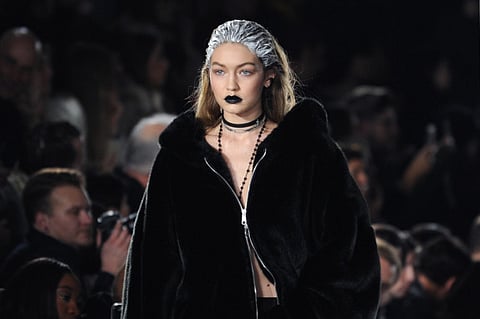Snapchat and the fashion industry: A valuable friendship
Brands have clamoured to build a presence on the platform in efforts to reach a new generation of so-called millennials

Here’s a question: What do looks from the catwalks at New York Men’s Fashion Week, a video of Gigi Hadid singing a duet with Taylor Swift and the latest cover of the annual Hollywood issue of Vanity Fair have in common?
Answer: Last week, all debuted exclusively on Snapchat, confirmation of the enthusiastic adoption of the messaging app by the worlds of fashion, media and entertainment.
Since Snapchat was introduced in 2011, its popularity and growth have been explosive. The service, known for its blurry self-destructing “snaps” that can be scribbled upon and that contrast starkly with the curated, filtered scenes found on rival image-based apps like Instagram, has become a powerful social media platform with a $16 billion (Dh58.75 billion) valuation and rumoured plans of a public offering. It currently delivers more than 7 billion video clips a day among its 100 million active users, most of whom are between the ages of 18 and 24.
That last statistic is the most valuable for high-fashion brands, many of which have clamoured to build a presence on Snapchat in the past 18 months in efforts to reach a new generation of so-called millennials.
And in an industry where social-media metrics are as much a barometer of success as the quality of styles seen on the catwalk, embracing the future has been crucial, despite Snapchat’s imperfect and unedited aesthetic, which is at odds with the idealised fashion values presented and peddled by the industry for five decades.
Valentino, Stella McCartney, Louis Vuitton, Carolina Herrera and Michael Kors have all used Snapchat to offer behind-the-scenes glimpses of their womenswear shows in the past 12 months. Burberry, often an early adopter of new media approaches, posted teasers to the service before its London Fashion Week show — alongside quirky cameos from front-row stars like the Vogue editor Anna Wintour and the model Cara Delevingne.
But how to accurately measure the commercial value of campaigns that vanish after 24 hours? Labels insist that creating Snapchat stories — like all social-media marketing — is less about driving short-term sales than it is about building long-term brand equity. But after flashy and much-trumpeted arrivals on the platform, companies such as Louis Vuitton and Michael Kors went quiet, and some industry experts say the fashion world needs inspiration to turn that camera flash into cold, hard cash.
In fact, it comes to financial returns, it is the unexpected new wave of underground “influencers” — rather than billion-dollar companies — that appear to be reaping concrete rewards, via old-fashioned product endorsements.
Take DJ Khaled, 40, a hip-hop producer who also happens to have one of the most popular Snapchat accounts on the planet. His proficiency on the platform — “a combination of inspirational talk, outrageous adventures and mundane minutiae of life,” according to Jon Caramanica of The New York Times — has won him an army of followers. Around 2 million viewers watch every snap.
As a result, he is building a fashion empire — he has his own fashion label, he tries out new sneakers sent to him by celebrity friends like Kanye West, he has luxury gifts delivered: Hublot sent him some custom watches midsnap this weekend.
Khaled’s success is built on the fact that he has realised that paid placements are too obvious for today’s teenagers and 20-somethings; the strategy has to speak more authentically. Perhaps that’s why Snapchat is also generating serious money for teenage amateurs who are not only adopting his techniques but also “reselling” fashion products online.
DJ Khaled’s personal sneaker plugger, for example, a 16-year-old high school student from Miami who goes by the name Benjamin Kickz on social media, says he has made a million dollars from his online business, which boomed after he started supplying rappers and A-listers with sought-after footwear.
Benjamin Kickz began by buying in bulk — and then reselling — rare or in-demand sneakers at a premium. His strategy was built on forging partnerships with local wholesalers to release products to him first, and that resulted in him catching the eyes of celebrities on Snapchat and Instagram.
Charles Fitchew, a 12-year-old in Manchester, England, said that neither he nor any of his friends followed brands on Snapchat, but that they have followed people “close to the streetwear brands” who snap product drop dates and where items can be bought.
“And gradually, I realised I could set up a similar sort of business myself, by selling sneakers from my account — last week alone I made 300 pounds,” or about $434, he said. “If someone famous posts a snapchat of themselves wearing a shoe, then the price goes up by a third overnight. There is a fashion business booming on Snapchat and anyone can have a hand in it.”
Everyone, it would appear, but the brands themselves.
Sign up for the Daily Briefing
Get the latest news and updates straight to your inbox



